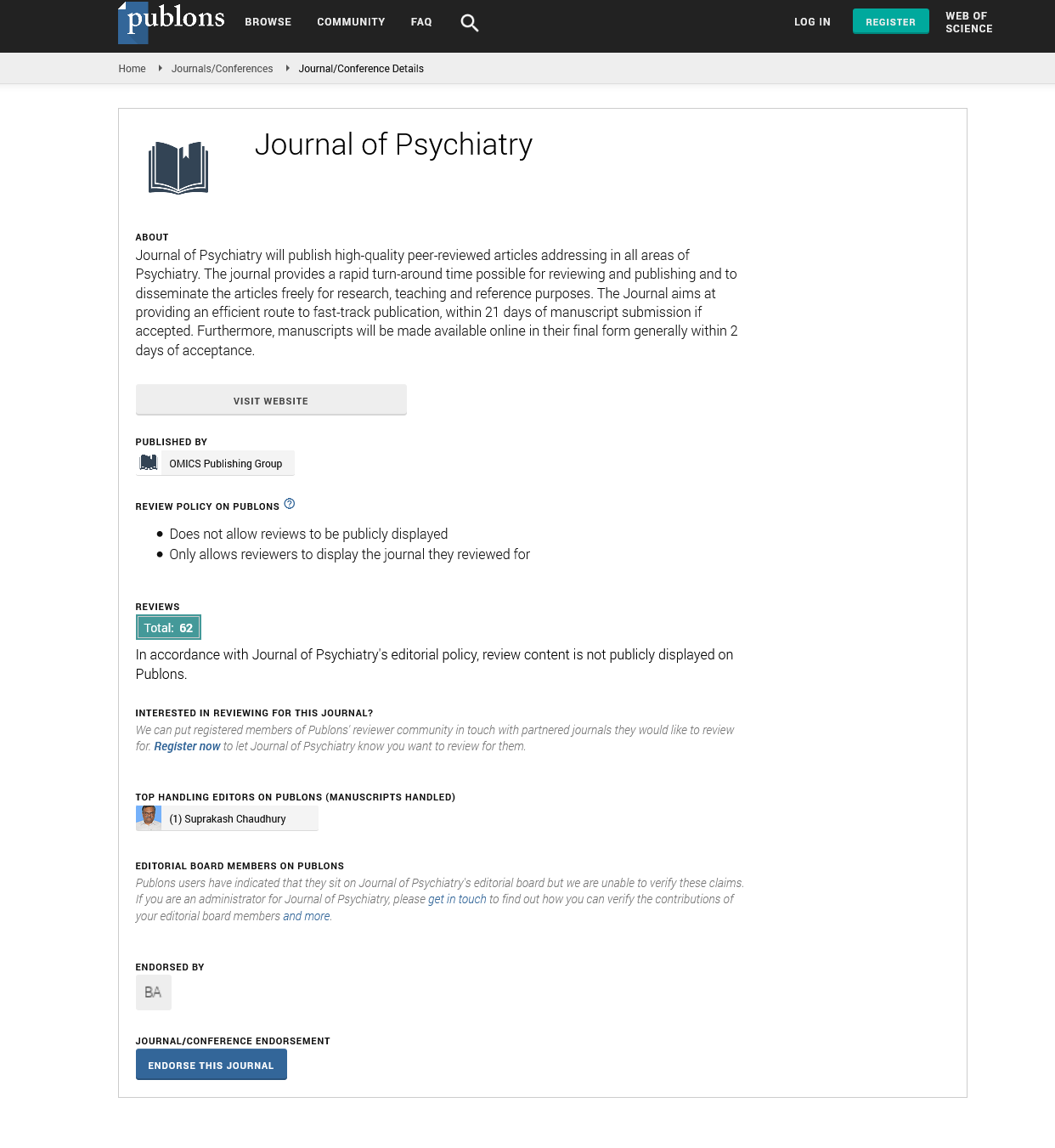PMC/PubMed Indexed Articles
Indexed In
- RefSeek
- Hamdard University
- EBSCO A-Z
- OCLC- WorldCat
- SWB online catalog
- Publons
- International committee of medical journals editors (ICMJE)
- Geneva Foundation for Medical Education and Research
Useful Links
Share This Page
Open Access Journals
- Agri and Aquaculture
- Biochemistry
- Bioinformatics & Systems Biology
- Business & Management
- Chemistry
- Clinical Sciences
- Engineering
- Food & Nutrition
- General Science
- Genetics & Molecular Biology
- Immunology & Microbiology
- Medical Sciences
- Neuroscience & Psychology
- Nursing & Health Care
- Pharmaceutical Sciences
Azidobupramine, a novel chemical tool to enlighten antidepressants mode of action
Euro Global Summit and Medicare Expo on Psychiatry
July 20-22, 2015 Barcelona, Spain
Svenja Nina Reinders1, Thomas Kirmeier2, Ranganath Gopalakrishnan2, 3, Vanessa Ganal2, Anna M Werner2, Serena Cuboni2, Georg C Rudolf2, 5 , Stephan A Sieber3, Florian Holsboer1, Theo Rein2 and Felix Hausch2
Posters-Accepted Abstracts: J Psychiatry
Abstract:
Antidepressants were discovered in the 1950s but their underlying molecular mechanisms are still incompletely understood. Revealing the identity of additional targets may contribute to a better understanding of the antidepressants` mode of action. The aim of this study was to develop a chemically modified antidepressant enabling the identification of alternative direct drug targets. For this purpose, azidobupramine, a structurally related analogue of imipramine, was synthesized featuring two additional chemical groups, one for photoaffinity labeling (PAL) and the other for copper(I) catalyzed azide alkyne cycloaddition (CuAAC). Using the serotonin transporter as model target, we demonstrate that azidobupramine is characterized by equilibrium dissociation constants (Ki) equivalent to those of clinically active substances. Furthermore, we show that azidobupramine forms chemical bonds with the transporter after UV light exposure in living cells. Thus, azidobupramine represents a promising and versatile tool for the discovery of novel direct antidepressant target sites in living systems.

